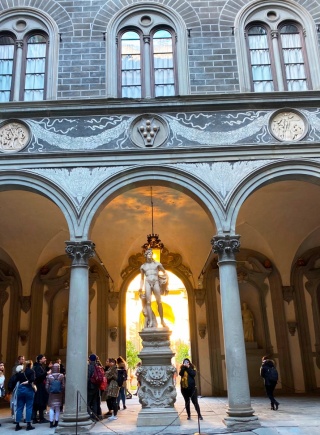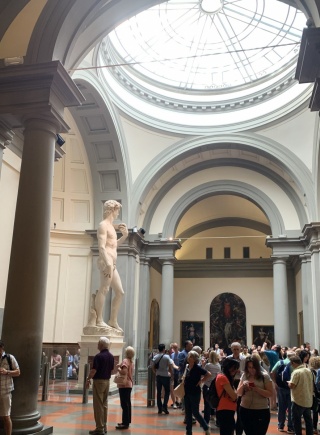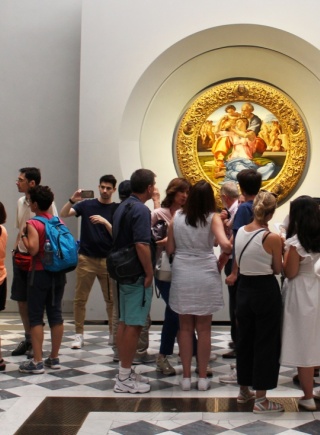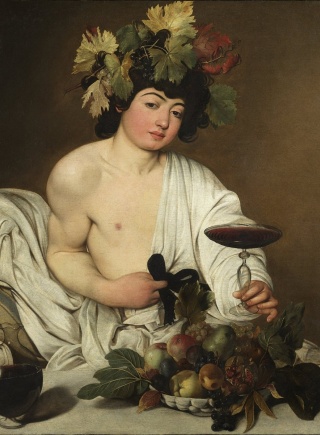Santa Croce Basilica in Florence
One of the most important representations of Gothic art in Italy
The Santa Croce Basilica is located in the homonymous square in the heart of Florence. It is one of the largest Franciscan churches and undoubtedly one of the most important representations of Gothic art in Italy.
The Basilica of Santa Croce in Florence is known as the "temple of Italian Glories" for the numerous burials of artists, literaries and scientists. Despite being a Catholic church, non-believers are buried there, such as the poet Ugo Foscolo.
The first famous person buried inside the Basilica was Leonardo Bruni, an Italian philosopher and writer who lived in the first half of the fifteenth century, while the last person housed inside the church was Giovanni Gentile, an Italian writer and politician who died in 1944. After the war some commemorative plaques are affixed such as that of Enrico Fermi buried in the United States where he died in 1954.
In 1211 San Francesc d'Assisi visited Florence, along the Via Cassia, and with his followers decided to establish and found an oratory just outside the walls of the city, an area attributable to Piazza Beccaria. Later, with the growing number of members of the oratory, it was necessary to renovate it. These works caused various disputes between the friars divided between those who wanted a larger building and those who instead opted for an essential and poor structure in line with the "Rule" (document of St. Francis with the basic rules of his order).
On May 3, 1294, the Basilica was founded and work began on the apse with a project signed by Arnolfo di Cambio.
The Basilica of Santa Croce has continued to be enriched and modified in the seven centuries following its foundation, always acquiring new symbolic connotations. From Franciscan church to religious "town hall", from laboratory to artistic workshop and so on. Some transformations were carried out by Vasari around the sixteenth century with the idea of making the Basilica a great Italian mausoleum.
As in many Florentine basilicas, the facade was originally unfinished. The wall that covered it closely resembled the one that can still be seen today in San Lorenzo, although the shapes and proportions are very different.
Initially, the Quarantesi family offered to finance the façade with the condition that the Quarantesi coat of arms was clearly visible in the center of the façade. The request discouraged the Franciscan friars from accepting the proposal and the wealthy family decided to invest their money in the construction of another church.
The current façade was completed by Niccolò Matas around 1853 using a neo-Gothic style that received much appreciation, so much so that he was then commissioned to create the façade of Santa Maria del Fiore.
On the left of the church the statue of Dante was placed, in the presence of King Vittorio Emanuele II.
THE INTERIOR OF SANTA CROCE IN FLORENCE
The interior of the Basilica of Santa Croce is apparently simple but monumental at the same time. The three naves are divided by two large rows of octagonal pillars. The interior was designed with an Egyptian cross shape that is "T" with a transept that divides the church at the height of the polygonal apse. Cosimo I commissioned Giorgio Vasari to modernize the interior of the Basilica after the new provisions of the Council of Trent. The Basilica houses countless tombs: on the floor alone there are more than two hundred and fifty marble slabs with reliefs.
Although the church was used as a burial place for celebrities, it was only in the nineteenth century that it became a real "pantheon" of personalities linked to art, literature and music.
In 1871 the poet Ugo Foscolo was buried with a very crowded ceremony and expressly asked to be able to rest near important figures such as Michelangelo and Galileo.
The construction of Dante's tomb was also started, but the city of Ravenna refused to deliver the remains of the poet who died in exile.
The Basilica of Santa Croce came to house fifteen thousand corpses, with a great many requests after its fame as "urns of the forts" had spread.
The requests were examined by a commission and approved by the Grand Duke himself.
Inside, we recall, today the remains of important figures such as Leon Battista Alberti, Vittorio Alfieri, Michelangelo, Galileo, Gino Capponi, Leonardo da Vinci and many other names that have made history are contained.
To visit the Basilica of Santa Croce in Florence it is possible to organize a guided tour, contact our information and reservations office at +39 055/2670402.
Magazine
Scopri di più
 Leonardo Da Vinci at the Uffizi Gallery
Leonardo da Vinci, Tuscan by birth, has spent most of his life traveling around Italy. Many of his masterpieces are therefore scattered in v...
Read More
Leonardo Da Vinci at the Uffizi Gallery
Leonardo da Vinci, Tuscan by birth, has spent most of his life traveling around Italy. Many of his masterpieces are therefore scattered in v...
Read More
 Piazza della Signoria in Florence and the fountain of Neptune
Piazza della Signoria is a real treasure chest of art treasures, in the heart of historic Florence.This famous Florentine square is home fir...
Read More
Piazza della Signoria in Florence and the fountain of Neptune
Piazza della Signoria is a real treasure chest of art treasures, in the heart of historic Florence.This famous Florentine square is home fir...
Read More
 The Duomo of Florence, Santa Maria del Fiore Cathedral
The Cathedral of Santa Maria del Fiore is the fifth largest church in Christianity."Duomo" is a word that derives from the Latin "domus", or...
Read More
The Duomo of Florence, Santa Maria del Fiore Cathedral
The Cathedral of Santa Maria del Fiore is the fifth largest church in Christianity."Duomo" is a word that derives from the Latin "domus", or...
Read More
 The Bargello Museum and Donatello's David
The Bargello National Museum is one of the most important Italian museums and houses masterpieces by Michelangelo, Ghiberti, Cellini, Giambo...
Read More
The Bargello Museum and Donatello's David
The Bargello National Museum is one of the most important Italian museums and houses masterpieces by Michelangelo, Ghiberti, Cellini, Giambo...
Read More
 Palazzo Strozzi in Florence a timeless jewel
Palazzo Strozzi has three grandiose identical portals facing Via Tornabuoni and Piazza Strozzi. The palace was commissioned by Filippo Stroz...
Read More
Palazzo Strozzi in Florence a timeless jewel
Palazzo Strozzi has three grandiose identical portals facing Via Tornabuoni and Piazza Strozzi. The palace was commissioned by Filippo Stroz...
Read More
 Palazzo Medici Riccardi in Florence the first Medici residence
The Medici Riccardi palace is located in the heart of Florence and is a work created by the architect Michelozzo, commissioned by Cosimo the...
Read More
Palazzo Medici Riccardi in Florence the first Medici residence
The Medici Riccardi palace is located in the heart of Florence and is a work created by the architect Michelozzo, commissioned by Cosimo the...
Read More
 Palazzo Pitti in Florence and the Palatine Gallery
Palazzo Pitti was the palace of the Grand Duchy of Tuscany under the dynasty of the Medici family previously and the Lorraine later.Inside t...
Read More
Palazzo Pitti in Florence and the Palatine Gallery
Palazzo Pitti was the palace of the Grand Duchy of Tuscany under the dynasty of the Medici family previously and the Lorraine later.Inside t...
Read More
 Michelangelo's David at the Academy of Florence
Michelangelo's David is an imposing sculpture in Carrara marble still considered the perfect ideal of a male figure. It is certainly made ar...
Read More
Michelangelo's David at the Academy of Florence
Michelangelo's David is an imposing sculpture in Carrara marble still considered the perfect ideal of a male figure. It is certainly made ar...
Read More
 The Boboli Gardens in Florence and its wonders
The Boboli Gardens covers an area of 45,000 square meters on the hill behind Palazzo Pitti and continues down towards Porta Romana, passin...
Read More
The Boboli Gardens in Florence and its wonders
The Boboli Gardens covers an area of 45,000 square meters on the hill behind Palazzo Pitti and continues down towards Porta Romana, passin...
Read More
 The Uffizi Gallery, the history of the largest Renaissance museum
The Uffizi Museum houses one of the most important Renaissance art collections in the world, Botticelli, Cimabue, Caravaggio, Giotto, Michel...
Read More
The Uffizi Gallery, the history of the largest Renaissance museum
The Uffizi Museum houses one of the most important Renaissance art collections in the world, Botticelli, Cimabue, Caravaggio, Giotto, Michel...
Read More
 Sandro Botticelli at the Uffizi Gallery of Florence
The Uffizi Gallery is one of the most important museums in the world, but also the Museum of Sandro Botticelli!The Uffizi museum is based in...
Read More
Sandro Botticelli at the Uffizi Gallery of Florence
The Uffizi Gallery is one of the most important museums in the world, but also the Museum of Sandro Botticelli!The Uffizi museum is based in...
Read More
 Read More
Read More
 Read More
Read More
 Read More
Read More
 Read More
Read More
 Read More
Read More
 Read More
Read More
 Read More
Read More
The Uffizi Gallery houses the largest collection of paintings from Romanesque period to the 18th century. Nowadays the Uffizi still accommodates famous masterpieces exhibited in chronological order

